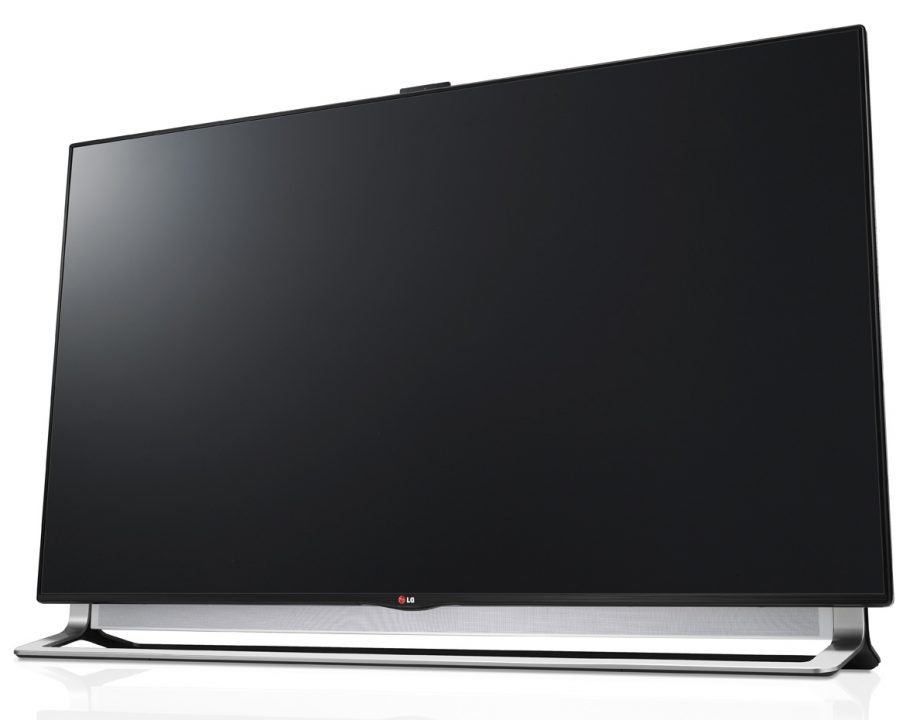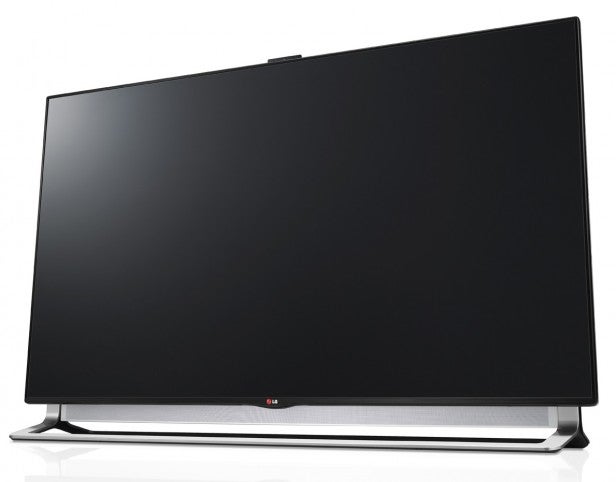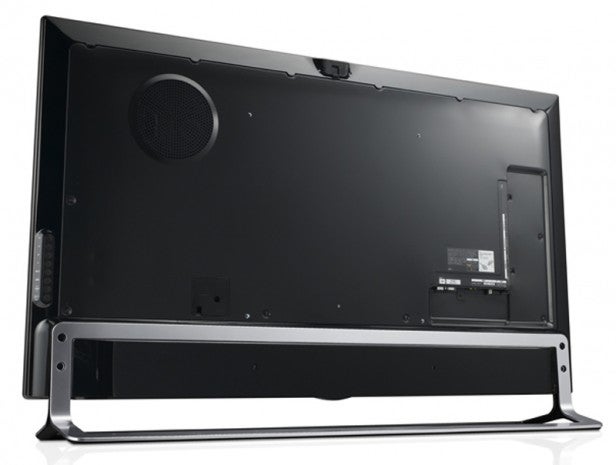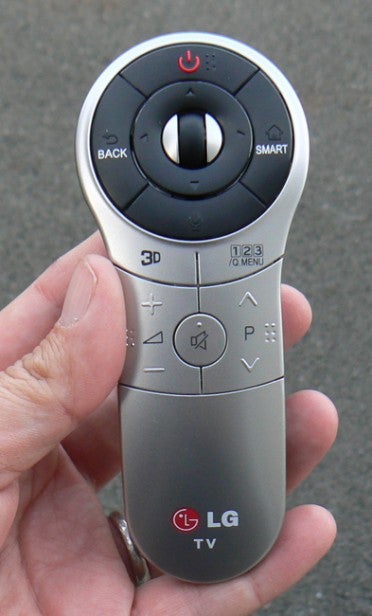LG 65LA970W Review
LG 65LA970W
First Review: LG enters the 4K fray and it's another outstanding entry

Sections
- Page 1 LG 65LA970W Review
- Page 2 Picture Quality Review
- Page 3 3D, Audio, and Conclusions Review
Verdict
Pros
- Arguably the best native UHD picture quality to date
- Fun 3D picture quality
- Excellent sound quality
Cons
- Limited effective viewing angle
- Only three HDMIs, and none are built to the latest HDMI spec
- £500 dearer than some rivals
Key Specifications
- Review Price: £5500.00
- 65-inch LCD TV with direct LED lighting
- UHD/4K Native resolution
- Passive 3D playback
- Smart TV with extensive video streaming
- multimedia playback via USB or wi-fi/LAN network
What is the LG 65LA970W?
The LG 65LA970W is yet another addition to the exploding 4K/UHD TV market, squeezing 3840 x 2160 pixels into its 65-inch frame. It’s a high-spec screen in lots of other ways too, with highlights of a direct (rather than edge) LED lighting system, a high-end video processing engine, 3D playback and an innovative 4.1-channel ‘sliding speaker’ system.
SEE ALSO: What is 4K?

LG 65LA970W: Design and Features
Remarkably LG claims that the LG 65LA970W has a bezel just 1mm wide! Unfortunately, though, this isn’t actually true. Watch anything on the set and there’s a clear 1cm of black frame around it. This still isn’t much of a bezel, to be fair, considering it’s supporting a huge 65-inch screen. But still, it’s not 1mm.
LG’s excuse for its 1mm claim is that the bezel has a slim silver outer trim and a black main bezel, so that when the TV is off you only see the silvery bit. But for us a bezel is the whole frame around the screen, not just the bit you see when the TV is switched off.
The LG 65LA970W does, though, have a genuine design innovation up its sleeve: its 4.1-channel ‘sliding speaker’. This is essentially a speaker bar running almost the full width of the screen that slides down out of the TV’s frame when you turn the set on, and slides back up again when you turn it off.
It’s very slick and gadgety, and is an interesting new solution to the perennial question of how to get decent audio out of skinny TVs – especially as the four speakers in the bar fire straight forwards rather than down like most flat TV speakers, potentially delivering much more powerful and direct sound.
We’re not entirely sure it’s necessary to have the speaker bar hide away when the TV is turned off, as the bar doesn’t really spoil the 65LA970W’s looks even when it’s sticking out – certainly if you’ve got the TV mounted on its slightly industrial-looking full-width stand. Still, sliding speakers are cool, right?
One final design element to mention is that the 65LA970W features a pop-up camera in its top edge to support both Skype and LG’s slightly rudimentary gesture control system.
SEE ALSO: Best 4K TV round-up

Switching our attention to the LG 65LA970W’s rear, we find a fair rather than brilliant set of connections. On the upside, there are three USBs, capable of playing back video, photo and music files from USB storage devices or recording to USB HDDs. One of these USBs is built to the 3.0 standard, too. There are also both LAN and built-in Wi-Fi options for adding the TV to your PC network for streaming files from your computers, and for accessing LG’s vibrant and content-rich online service.
The main disappointment concerns the HDMI inputs. For a start there are only three when we’d expect even a mid-range HD TV to have four these days, never mind a £5,500 4K TV model. Also, these HDMIs don’t enjoy the full bandwidth HDMI 2.0 spec enjoyed by the Panasonic L65WT600 (full review coming soon). This means that in their current form they can’t handle UHD feeds with higher frame rates than 30fps. We’ve asked LG to clarify the situation regarding these inputs and their future compatibility with UHD feeds at more than 30fps, but at the time of writing it’s been unable to provide us with a reply.
The LG 65LA970W intriguingly uses a direct LED lighting system, where the LED lights are positioned directly behind the screen rather than being ranged around the screen’s edge. Normally we would consider this a very good thing, as such direct lighting tends to deliver outstanding contrast results. Especially when accompanied with a local dimming system that adjusts the light levels of different parts of the image individually, to deliver a much higher contrast range.
However, the direct lighting is here partnered with LG’s Nano technology, which uses a light-diffusing layer to keep the TV as slim as possible – and in past incarnations, this approach has led to some serious compromised contrast and light blocking artefacts. Hmm.
 The heavy-duty processing duties associated with upscaling standard def and HD sources to the 65LA970W’s UHD resolution is taken on by LG’s Tru-Ultra HD engine, while other day-to-day picture processing is handled by LG’s well-established Triple XD system, with elements focussing on contrast, colour and detail.
The heavy-duty processing duties associated with upscaling standard def and HD sources to the 65LA970W’s UHD resolution is taken on by LG’s Tru-Ultra HD engine, while other day-to-day picture processing is handled by LG’s well-established Triple XD system, with elements focussing on contrast, colour and detail.
LG also claims that the IPS panel inside the LG 65LA970W supports wider viewing angles than other types of LCD TV, and that it’s a fast-response screen able to avoid LCD’s normal blur problems – something that’s especially important to achieve when displaying UHD content.
This being an LG TV, its 3D system uses the brand’s passive technology, with four pairs of 3D glasses included for free. Using passive 3D on a UHD TV means you get to see the full 1080-line 3D image stored on 3D Blu-rays rather than the resolution-comprised images you get on normal HD screens.
We’ve covered the LG 65LA970W’s smart TV system in a previous feature, so we won’t go through everything again here. But to summarise it’s in many ways an excellent platform, thanks in particular to the huge amount of content it carries, its high presentation standards, and its brilliant ‘Magic Remote’ interface, which lets you just point directly at the option on the screen you want to select and scroll up and down menu lists using a tactile wheel-type knob.
The only downsides to the Smart TV system are that a weighty number of the available apps are of a pretty uninspiring standard, and that LG only offers the BBC iPlayer from the main UK catch-up TV channels. It does, though, also feature LoveFilm, Netflix, BlinkBox, KnowHow Movies, YouTube, BBC Sport, and in a currently exclusive deal, Sky’s NowTV platform – so it’s certainly not short of video content options.
SEE ALSO: LG Smart TV review
LG 65LA970W: Set Up
As usual with an LG TV, the 65LA970W backs up its high-end image with a huge quantity of picture adjustments. These include full colour management, white balance fine tuning, gamma controls and, crucially, extensive control over most aspects of the set’s picture processing. You can also adjust the strength of the local dimming system – including turning it off if it causes the sort of blocking problems witnessed with it on previous LG generations.
So extensive are the LG 65LA970W’s picture adjustments that the set has been approved by the independent Imaging Science Foundation (ISF), with its support extending to day and night ISF setting memories where an ISF engineer could store professionally calibrated picture settings.
While most people won’t go the full ISF route, there are a few basic setup tips we’d recommend you follow. First, leave the noise reduction systems turned off while watching anything but standard definition. Also we’d recommend turning off the Trumotion processing system for the majority of the time as it can cause a few unwanted side effects – and if you DO use it, choose the User setting and reduce both the Judder and Blur components to around their three level.
We also suggest toning down the set’s colour settings a bit from their over-aggressive defaults.
The set’s contrast controls need to be handled with care too, but this is best addressed in the picture quality section.
How we test televisions
We test every TV we review thoroughly over an extended period of time. We use industry standard tests to compare features properly. We’ll always tell you what we find. We never, ever, accept money to review a product.

